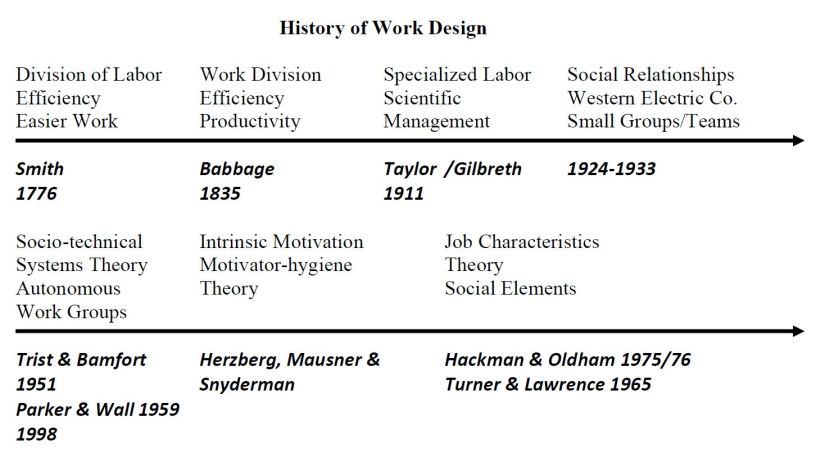Determining the course delivery mode for learners is important. Learning goal orientation (LGO) delivery modes can either enable or create barriers to motivation to learn and course/training outcomes. Have you thought about how the technology-enhanced instruction is supporting or challenging your learners? I have been thinking about this a great deal this semester as I weave face-to-face meetings in my seminar session with online/blended/connected projects and assignments.
Klein, Noe, and Wang (2006) conducted a quasi-experiment with 600 undergraduate students to compare blended learning and classroom delivery in three consecutive, ten week terms over the course of a full academic year. Unlike other blended learning or classroom comparison studies, the authors aim was to understand why or under what conditions one method may be more effective than the other and identify variables based on motivation theory to investigate how and why blended learning may be more effective than classroom instruction.
A Conceptual Model: Motivation for Learning Goal Orientation (Klein, Noe & Wang, 2006)
This model integrates training motivation theory, which is based on the Colquitt, LePine, and Noe (2000) meta-analytic path analysis of 20 years of training research and Brown and Ford’s (2002) input-process-output (IPO) model of learning.
Klein, Noe, and Wang (2006) tested the following hypothesis in their study:
1) Motivation to learn – predictor of course outcomes and is influenced by both individual and situational characteristics (Colquitt et al., 2000; Noe, 1986; Tannenbaum & Yukl, 1992).
2) Instructional characteristics – reduced motivation in distance learning courses include distractions and interruptions; level of interaction among the learners and between the instructor and learners, and increased learner control over the pace of instruction based on self-determination theory (Gange & Deci, 2005).
3) Learner characteristics – LGO chosen can have a strong effect on learning and the allocation of effort during learning (Fisher & Ford, 1998); interest in the strongest and most consistent relationship with motivation to learn and course outcomes; challenges may encourage some learners to persist while be a barrier for other learners
4) Perceived barriers and enablers – can impact motivation to learn and influence transfer of learning; attitudes examines towards use of new technology and availability of personal/technical support
5) Course outcomes – goal to have robust positive relationships between motivation to learn and course outcomes that impact the cognitive learning (Kraiger, Ford & Salas, 1993) and effective learning goal orientation (LGO)
6) Mediating role of motivation to learn – expected relationships between the IV (delivery mode, LGO, and perceived barriers and enables) and the DV (course outcomes); specifically Sitzmann et al. (2006) found that blended learning was 13% more effective than classroom knowledge for teaching declarative knowledge, whereas White (1997) found distance learners engaged in greater metacognition than classroom learners; Other mediators: constraints, lack of choices, self-regulated learning, varied learner motivation
While reading this article for the training and development section of my HRD seminar, there are some limitations to comparing undergraduate learning to training – but this piece did present some interesting findings and suggested research for the future. Here are the results shared by Klein, Noe, and Wang (2006) from this study:
- Learners in the blended learning condition, learners high in domain-specific LGO, and learners who perceived external features as enablers rather than barriers had higher motivation to learn
- Barriers/enablers partially mediated the effects on LGO on motivation to learn
- Motivation to learn was significantly related to course satisfaction, metacognition, and course grades
- Motivation to learn mediated the relationships between the delivery mode, metacognition, relationship between LGO and course grades, and perceived barriers/enablers and course satisfaction
References:
Brown K.G. & Ford J.K. (2002). Using computer technology in training. In Kraiger, K. (Ed.).Creating, implementing, and managing effective training and development (pp. 192–233). San Francisco: Jossey-Bass.
Colquitt J.A., LePine J.A., &Noe R.A. (2000).Toward an integrative theory of training motivation: A meta-analytic path analysis of 20 years of research. Journal of Applied Psychology, 85, 678–707.
Gagne, M.& Deci, E.L. (2005). Self-determination theory and work motivation. Journal of Organizational Behavior. 26, 331–362.
Klein, H.J., Noe, R.A. & Wang, C. (2006). Motivation to learn and course outcomes: The impact of delivery mode, learning goal orientation, and perceived barriers and enablers. Personnel Psychology, 59, 665-702.
Kraiger, K., Ford, J.K., & Salas, E. (1993). Application of cognitive, skill-based, and affective theories of learning outcomes to new methods of training evaluation. Journal of Applied Psychology, 78, 311–328.
Sitzmann, T.M., Kraiger, K., Stewart, D.W., & Wisher, R.A. (2006). The comparative effectiveness of web-based and classroom instruction: A meta-analysis. Personnel Psychology, 59, 623–664.
Tannenbaum, S.I. & Yukl, G. (1992). Training and development in work organizations. Annual Review of Psychology, 43, 399–441.
White, C.J. (1997). Effects of mode of study on foreign language learning. Distance Education, 18, 178–196.




You must be logged in to post a comment.